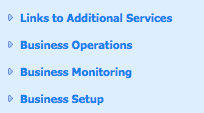 By default Plesk sets up the IMAP Email Service on your server so that four simultaneous connections can be made from the same IP address in the same timeframe. This is to protect your servers from too many connections.
By default Plesk sets up the IMAP Email Service on your server so that four simultaneous connections can be made from the same IP address in the same timeframe. This is to protect your servers from too many connections.
This however isn’t cutting it if you have a small office full of people on the same IP, connecting from 4 computers, 16 iphones and 12 iPads every 5 minutes.
The solution: tweak the IMAP configuration file, restart the daemon and have a good life. Let me show you how to do it on Plesk 11 and CentOS 6.4.

 By default SSH access is disabled for FTP and web users which is a very good thing. I’d recommend enabling this only if you know exactly who’s connecting to your server and why.
By default SSH access is disabled for FTP and web users which is a very good thing. I’d recommend enabling this only if you know exactly who’s connecting to your server and why. For those of you who hadn’t noticed, automatic scheduled backups are no longer working in Plesk 11 with some distributions. It’s not just you, and it’s not just your configuration. It’s a known issue according to
For those of you who hadn’t noticed, automatic scheduled backups are no longer working in Plesk 11 with some distributions. It’s not just you, and it’s not just your configuration. It’s a known issue according to 